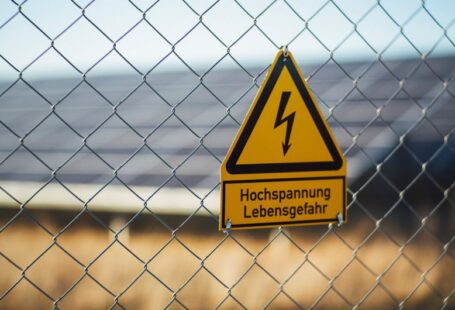In times of disaster, whether it be a hurricane, earthquake, or wildfire, the ability to quickly restore power is crucial for recovery and resilience efforts. One key player in this arena is solar power. Harnessing the sun’s energy to generate electricity has proven to be a reliable and sustainable solution in disaster-prone areas. The role of solar power in disaster recovery and resilience cannot be understated, as it offers a lifeline for communities in need of electricity when traditional power sources are compromised.
**Solar Power as a Reliable Energy Source**
When natural disasters strike, they often cause widespread damage to power lines and infrastructure, leaving communities without electricity for an extended period. In such situations, solar power systems can provide a reliable source of energy that is independent of the main grid. Solar panels can be installed on rooftops or in open areas, allowing them to continue generating electricity even when the main power supply is down. This reliability makes solar power an invaluable asset in disaster recovery efforts, ensuring that essential services such as hospitals, shelters, and communication networks can remain operational.
**Quick Deployment and Scalability**
One of the key advantages of solar power in disaster recovery is its quick deployment and scalability. Solar panels can be set up relatively quickly compared to traditional power infrastructure, providing immediate access to electricity in emergency situations. In addition, solar power systems can be easily scaled up or down depending on the energy needs of a particular area. This flexibility allows relief organizations to tailor their energy solutions to the specific requirements of each disaster-affected community, ensuring that resources are used efficiently and effectively.
**Reducing Dependence on Fossil Fuels**
Another important aspect of solar power in disaster recovery is its role in reducing dependence on fossil fuels. Traditional power sources such as diesel generators can be expensive to operate and require a constant supply of fuel, which may be difficult to obtain during a disaster. In contrast, solar power systems harness the abundant and renewable energy of the sun, reducing the need for costly and environmentally harmful fossil fuels. By promoting clean energy alternatives, solar power not only helps communities recover from disasters but also contributes to long-term resilience and sustainability.
**Community Empowerment and Self-Sufficiency**
Solar power also plays a crucial role in empowering communities and promoting self-sufficiency in disaster recovery efforts. By providing access to electricity through solar panels, communities can take control of their energy needs and reduce their reliance on external aid. This sense of empowerment can have far-reaching benefits, fostering community resilience and fostering a spirit of collaboration and innovation in the face of adversity. Furthermore, solar power systems can be integrated with energy storage solutions such as batteries, allowing communities to store excess energy for use during periods of low sunlight or high demand.
**Promoting Long-Term Resilience**
In conclusion, the role of solar power in disaster recovery and resilience is multi-faceted and essential for building sustainable and disaster-resilient communities. By providing a reliable, scalable, and clean energy source, solar power systems can help communities recover quickly from disasters and reduce their vulnerability to future crises. Additionally, solar power promotes community empowerment and self-sufficiency, fostering a sense of resilience and innovation in the face of adversity. As the world faces increasing challenges from climate change and natural disasters, harnessing the power of the sun can be a game-changer in building a more resilient and sustainable future for all.





